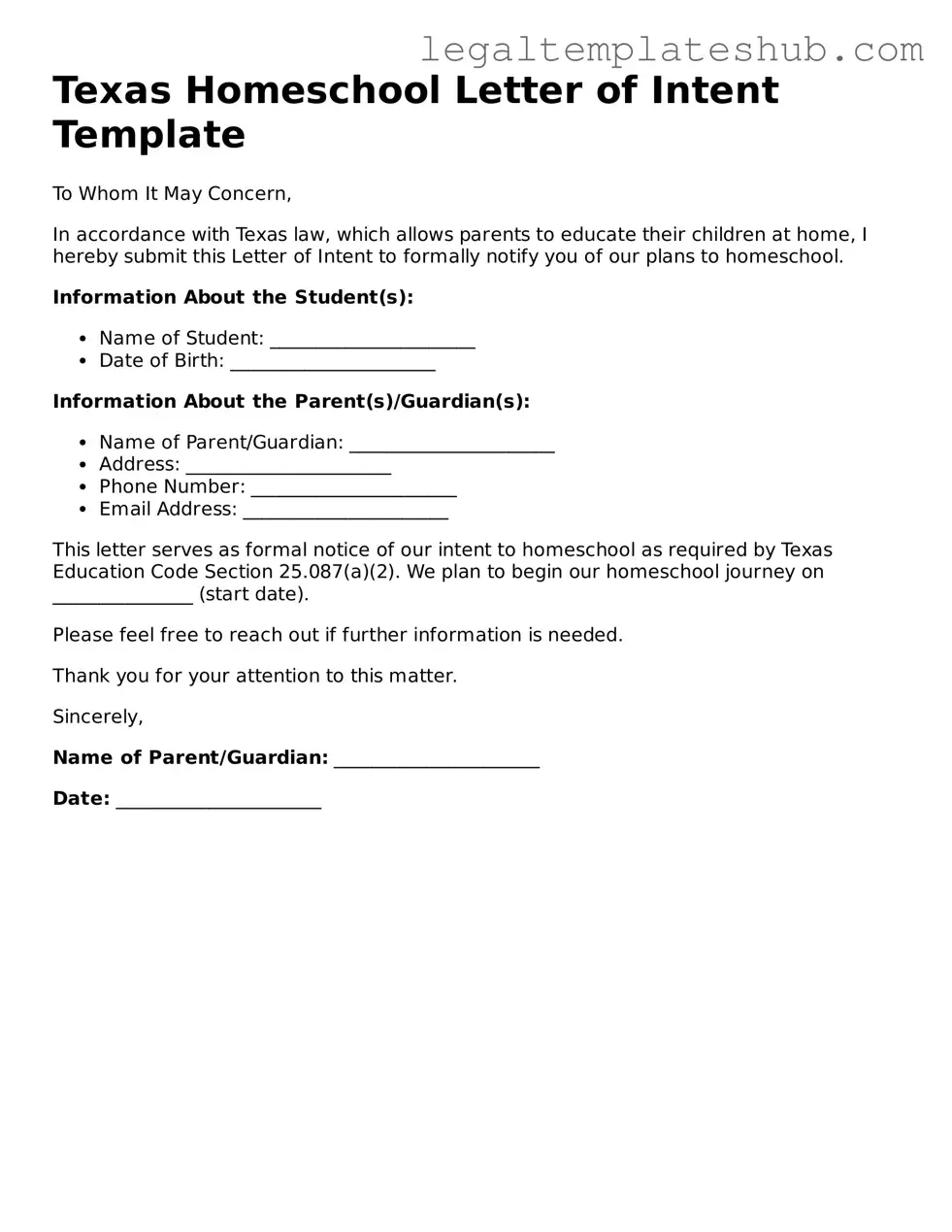Printable Homeschool Letter of Intent Document for Texas
The Texas Homeschool Letter of Intent is a crucial document that parents must submit to officially notify the state of their decision to homeschool their children. This form serves as a formal declaration of intent, ensuring compliance with Texas education laws. Understanding its importance can help streamline the homeschooling process and provide peace of mind for families embarking on this educational journey.
Ready to take the next step? Fill out the form by clicking the button below!
Access Editor
